Experts warn against the patio mistakes making your garden look drab not fab
The common patio mistakes that are easy to overlook, but can transform the look of your outdoor space
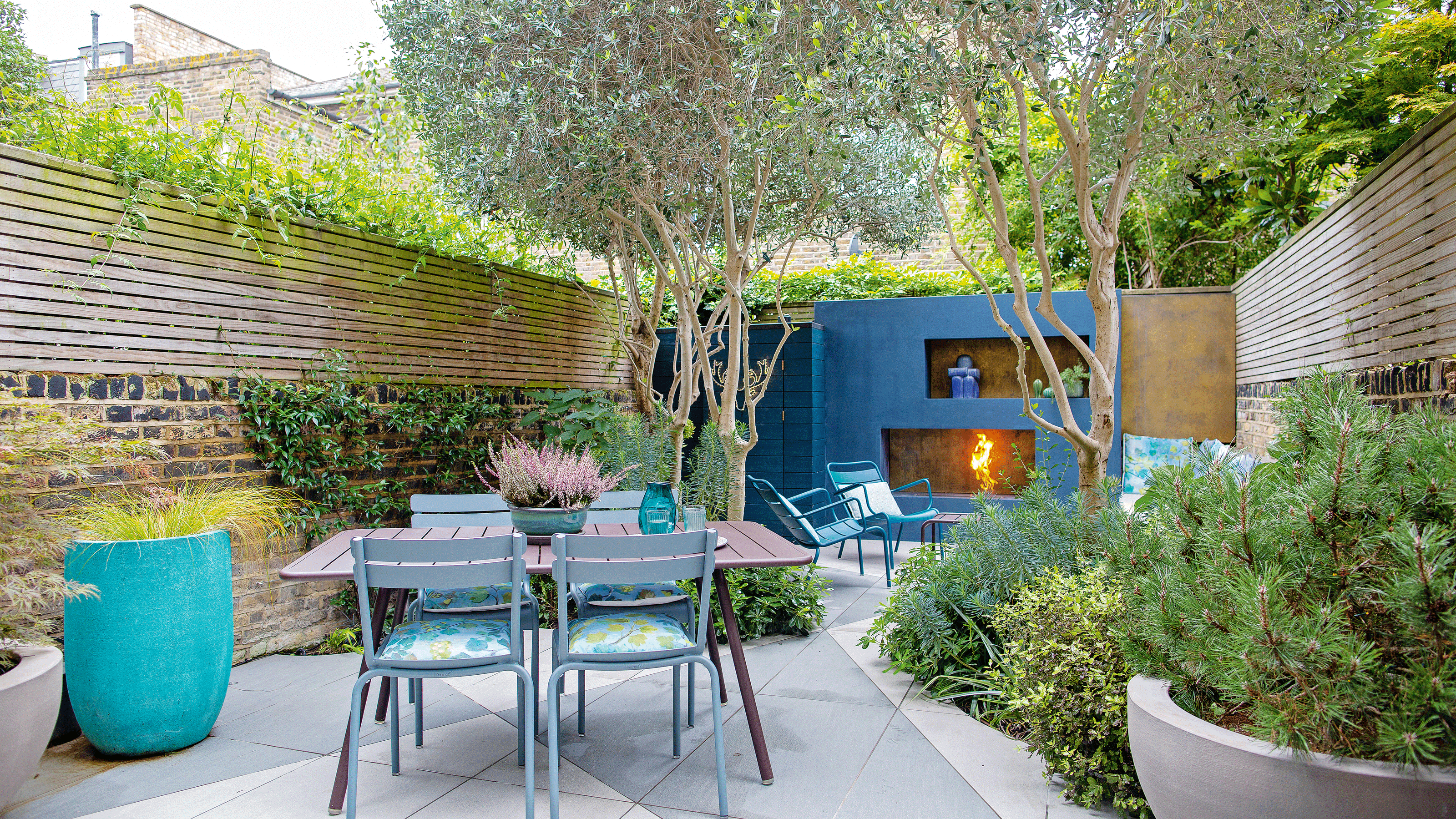

Whether you're about to embark on your first-ever patio project or you're giving your current paving a refresh, it pays to know about the common patio mistakes gardening experts warn against and how to avoid them. Proper planning and a good design strategy will help you skip over these pitfalls and enjoy a long-lasting patio for years to come.
Patio ideas make a wonderful addition to any outdoor space, and they're a sure way to help you relax and enjoy your garden when it starts to get warmer. But this vision can soon come crumbling down with a couple of patio design and styling mishaps.
'A good patio design can transform your outdoor living space – not just in terms of making it more visually appealing but also by adding practical touches that ensure it works for your lifestyle,' says Anna Hampshire, Head of Marketing, Marshalls. 'Get it right, and it’s like adding another room to the house.'
Patio mistakes
There's a lot to consider in terms of planning and design in order to create the perfect patio, and that's before you even get started on patio decor ideas. In this guide we cover the top patio mistakes and what you can do to avoid them.
1. Choosing the wrong paving material
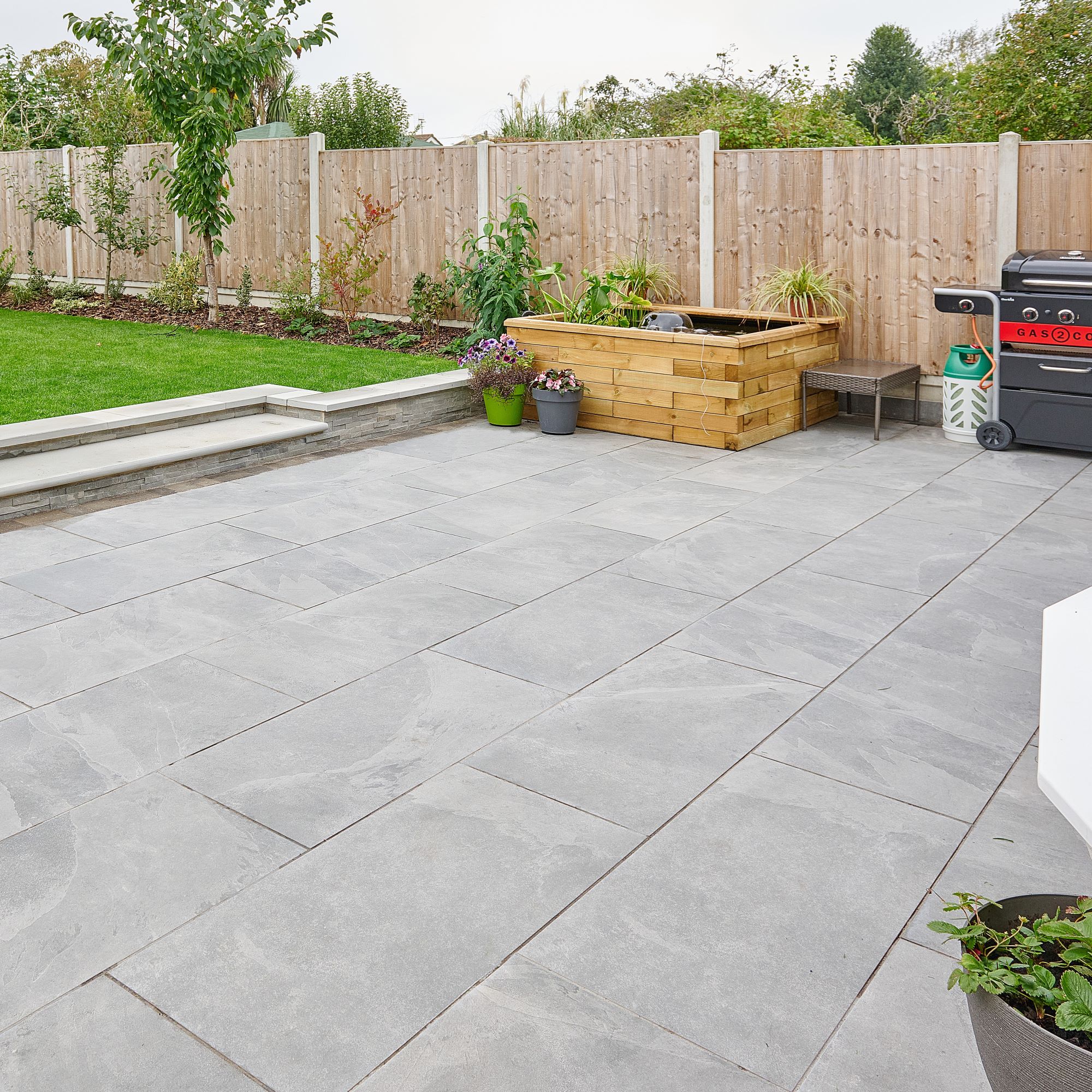
One of the most common patio mistakes homeowners make, especially in the UK, is not selecting materials that can be treated to suit the climate and weather. 'Some materials may not hold up well in areas with high humidity, while others may not be able to withstand harsh winter conditions,' explains Suhail Patel, Founder, Luxury Screens.
'For example, while concrete is a durable and affordable option for patios, untreated concrete can be susceptible to cracking over time especially if they are poured in large slabs or exposed to extreme temperature changes.'
Natural stones such as limestone and sandstone are a great patio paving idea, but again, this would need to be sealed to avoid erosion and fading. Porcelain paving slabs are a good option to consider; aside from looking beautiful, porcelain won't fade in the sun or be affected by frost.
Get the Ideal Home Newsletter
Sign up to our newsletter for style and decor inspiration, house makeovers, project advice and more.
2. Not installing adequate drainage
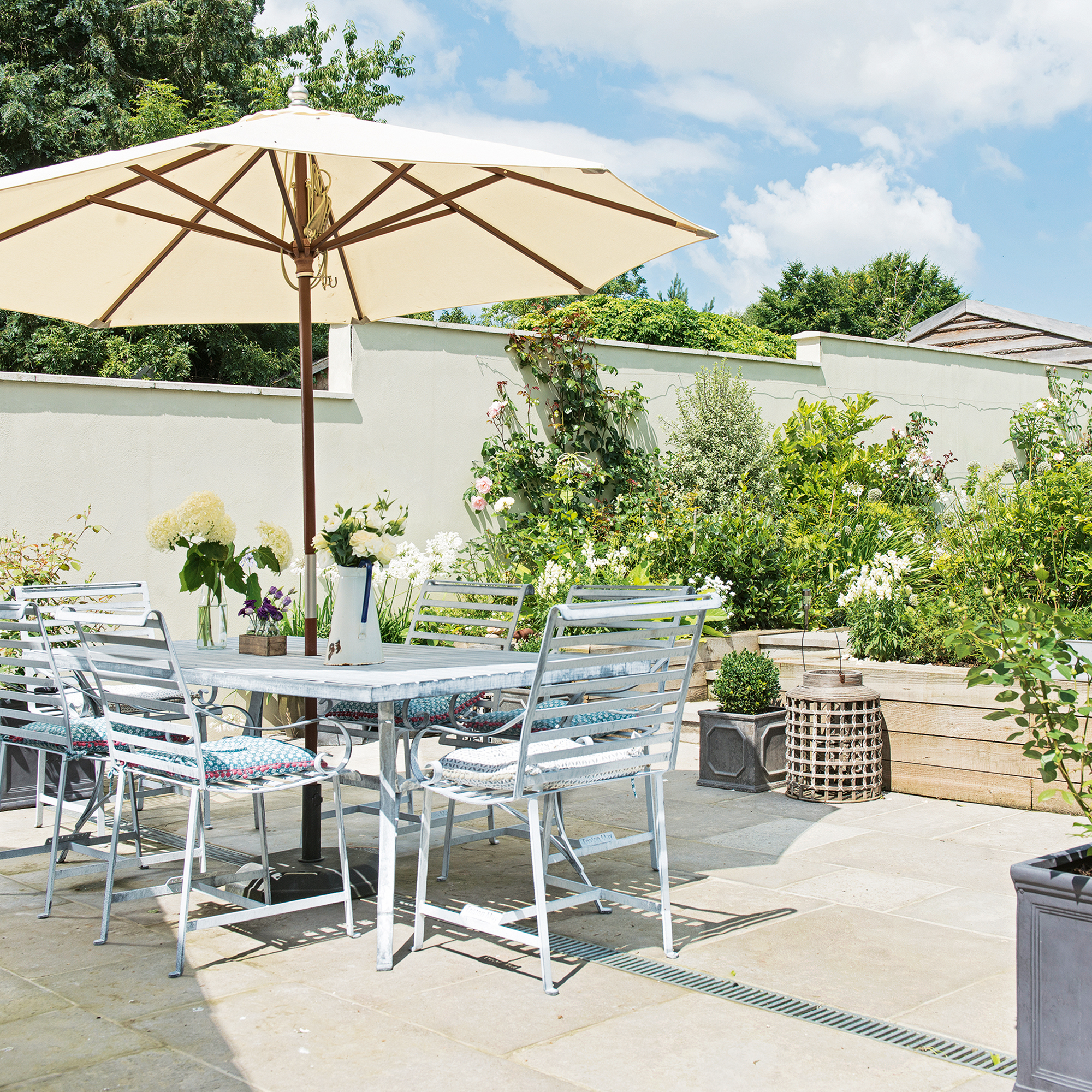
A major mistake you'll want to avoid when planning your patio is not incorporating some sort of drainage system for rainwater. Without adequate drainage, any water that collects on the patio risks running into areas you don't want it to, like towards patio furniture or the house.
'Ensuring you have drainage is one of the most important things to think about when designing and creating a patio,' says Holly Jones,Marketing and Sales Manager, Garden Street. 'When thinking about drainage, keep in mind that the rainwater should run off the patio away from the house and towards borders and lawns instead.'
A patio drain can be a thin strip running the length of the surface; it won't spoil the aesthetic but will keep your house well-protected from the rain. Alternatively, you can let the patio taper off naturally at a slant, so that water naturally runs away.
3. Cutting corners in the budget
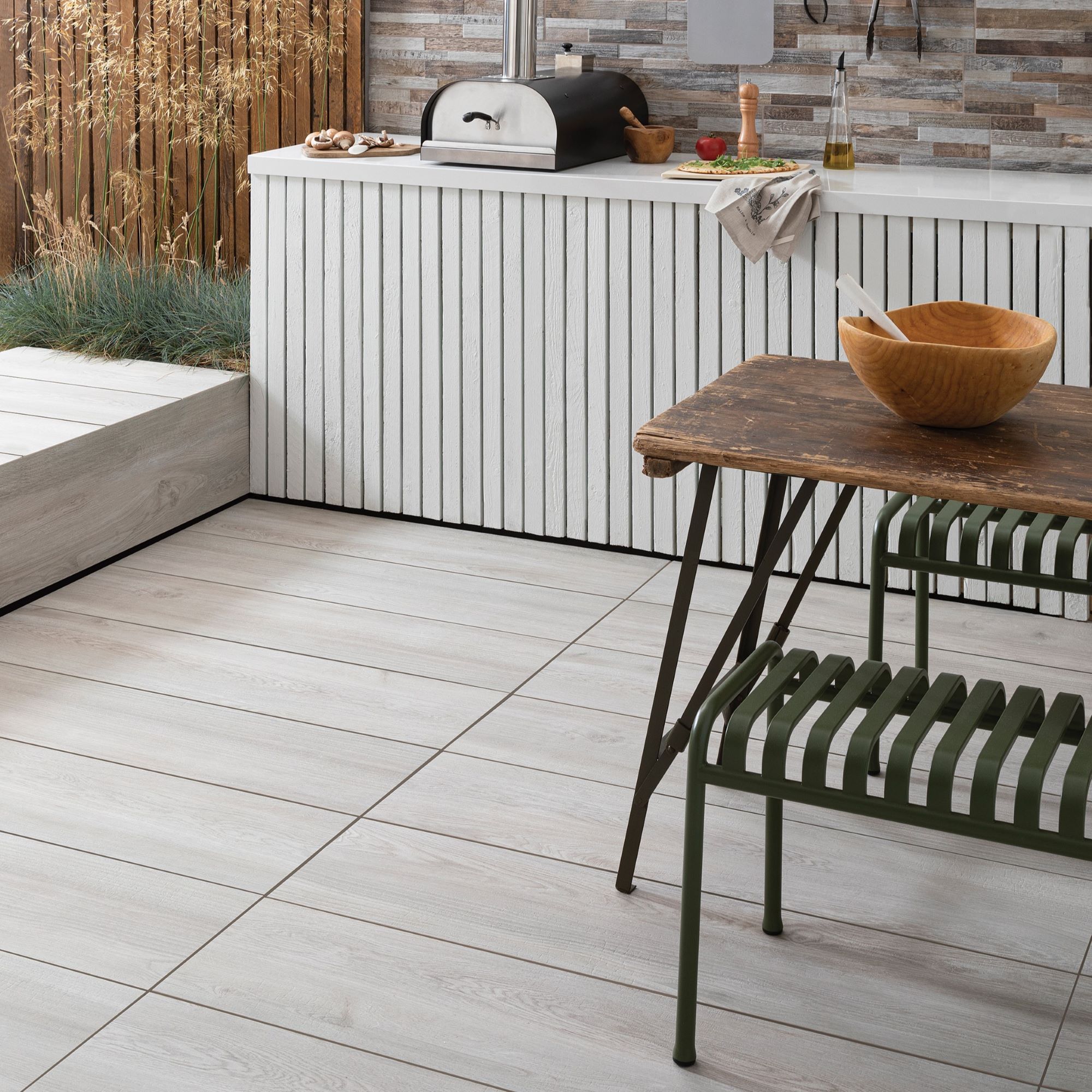
Cutting corners to keep the cost of a new patio as low as possible can result in several patio mistakes being made instead of one. One example is trying to lay the patio yourself rather than hiring a professional. Budget patio ideas are great when it comes to styling and design, but it's recommended not to try and do the groundwork yourself.
'Professionals have the skills and experience to create your dream space to a high standard and they will work with you to understand what you want to achieve with your space and discuss what is possible within your budget,' says Anna from Marshalls.
Generally speaking, it's important to be realistic about your budget. If you want a long-lasting patio that will serve your home for years to come, it's better to invest in good quality materials and reputable installers, preferably one accredited by a trade body and a trusted manufacturer. Cutting corners may save you a few pennies in the short term, but you'll probably experience more issues down the line.
4. Using the wrong size of paving
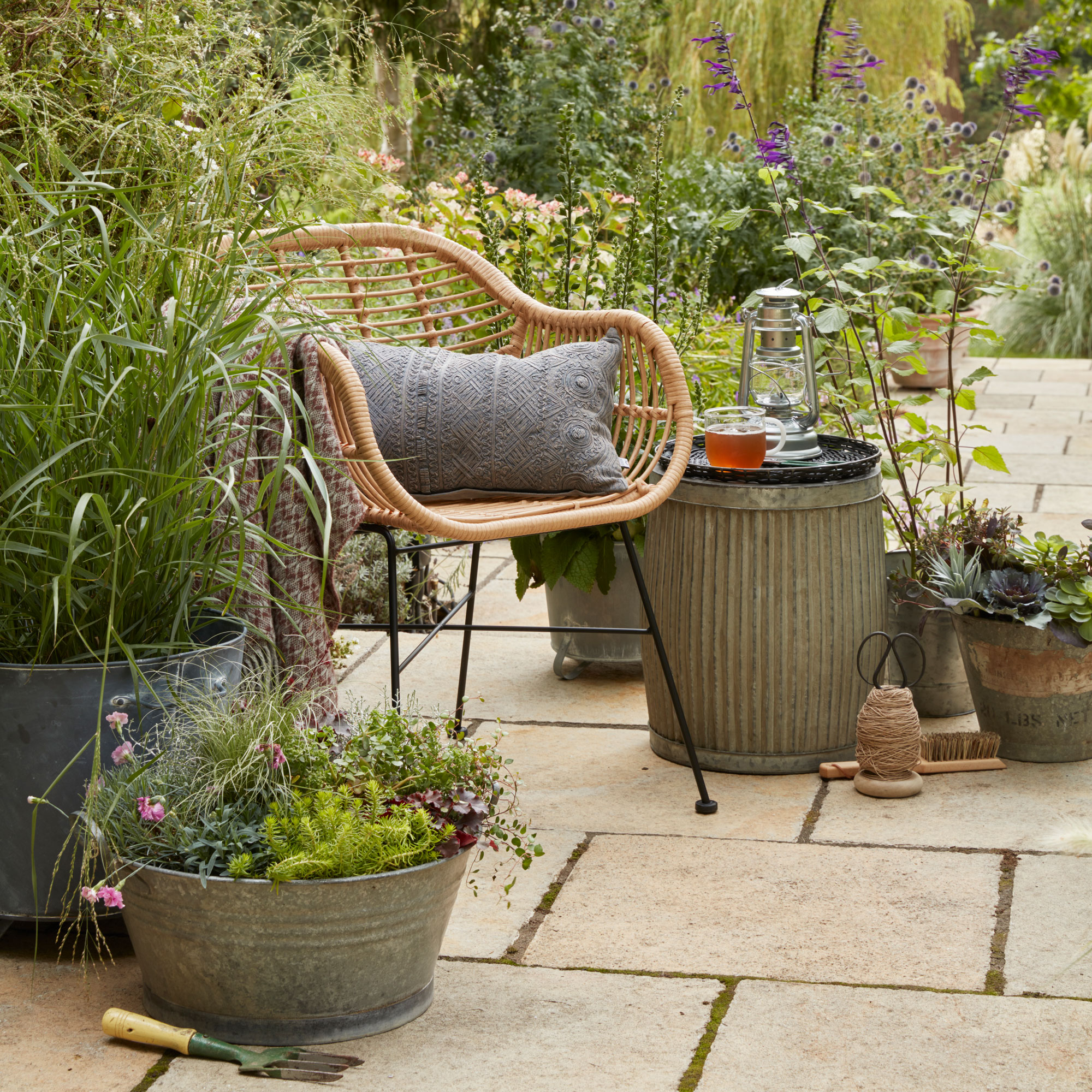
Using the wrong-sized paving slabs on the patio is an easy mistake to make, as it's not something we think would have a big impact. But the size of the pavers will actually create an impression of either more or less space on the patio, so don't overlook this in the planning stage!
Using oversized paving slabs for example is a savvy trick for small garden ideas, as they create a sense of scale and make the patio look bigger to the eye.
'If you have a small patio, small pavers can often look crowded and too busy', says Thomas Goodman, Property Expert, MyJobQuote. 'Though there aren't any exact formulas that you need to stick to. It’s more about understanding your space and what you’re looking to achieve. For example, you may want to use small pavers or cobblestones for an intimate atmosphere on a larger patio surface.'
5. Not looking at the material when it's wet
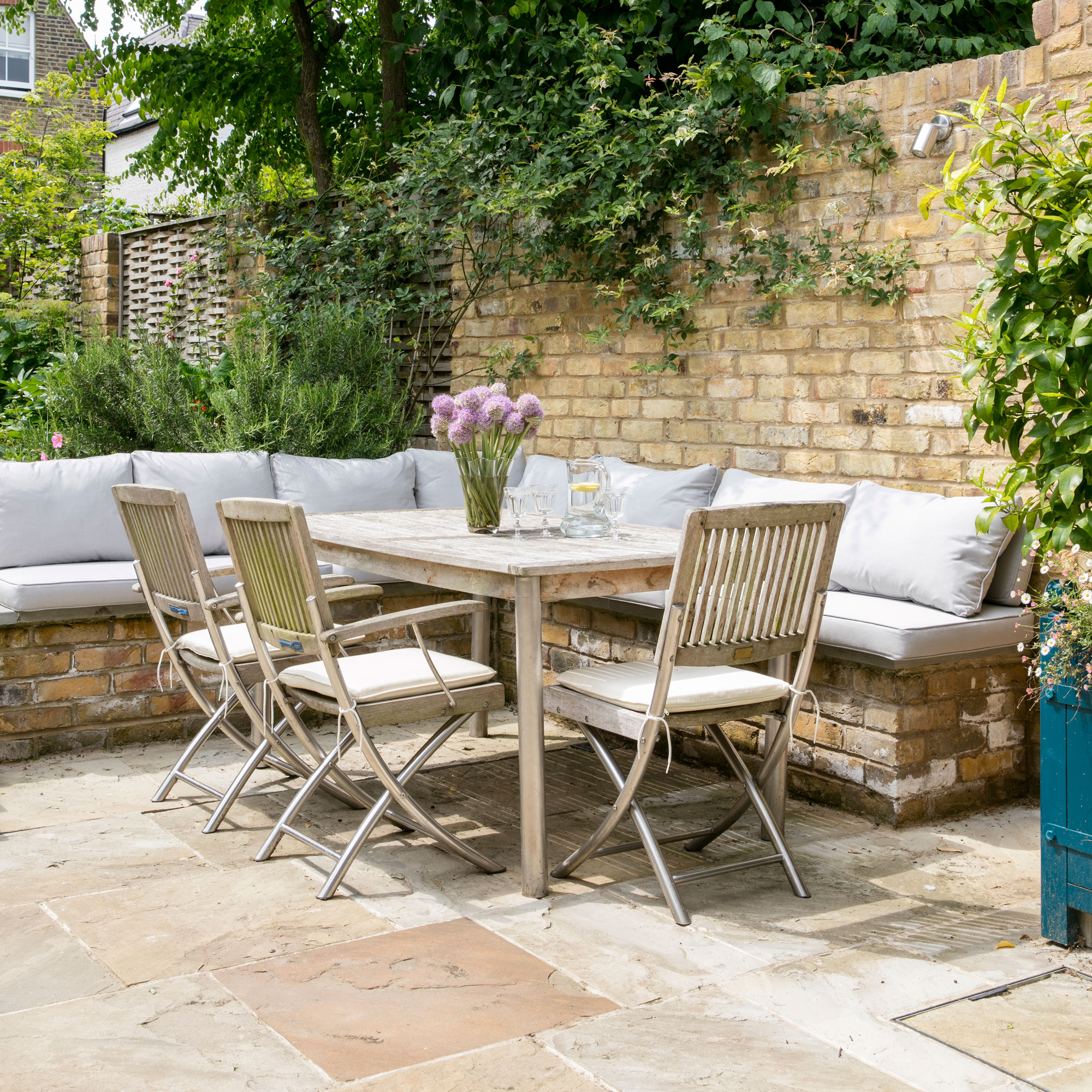
Aside from choosing the wrong type of material, another of the top patio mistakes is not considering the difference rain can make to how the chosen material looks. 'Patios can look very different when they have been rained on compared to when they are dry so it is important to check you like the difference in colour', says Holly from Garden Street.
Wet sandstone for example, looks completely different to dry sandstone, and though you might think that the patio won't be in use whilst it's raining, it might still be wet for up to 24 hours afterwards. If you want to gaze at your patio with joy whatever the weather, always consider how your chosen material looks when it's wet as well as dry.
6. Lack of proper maintenance
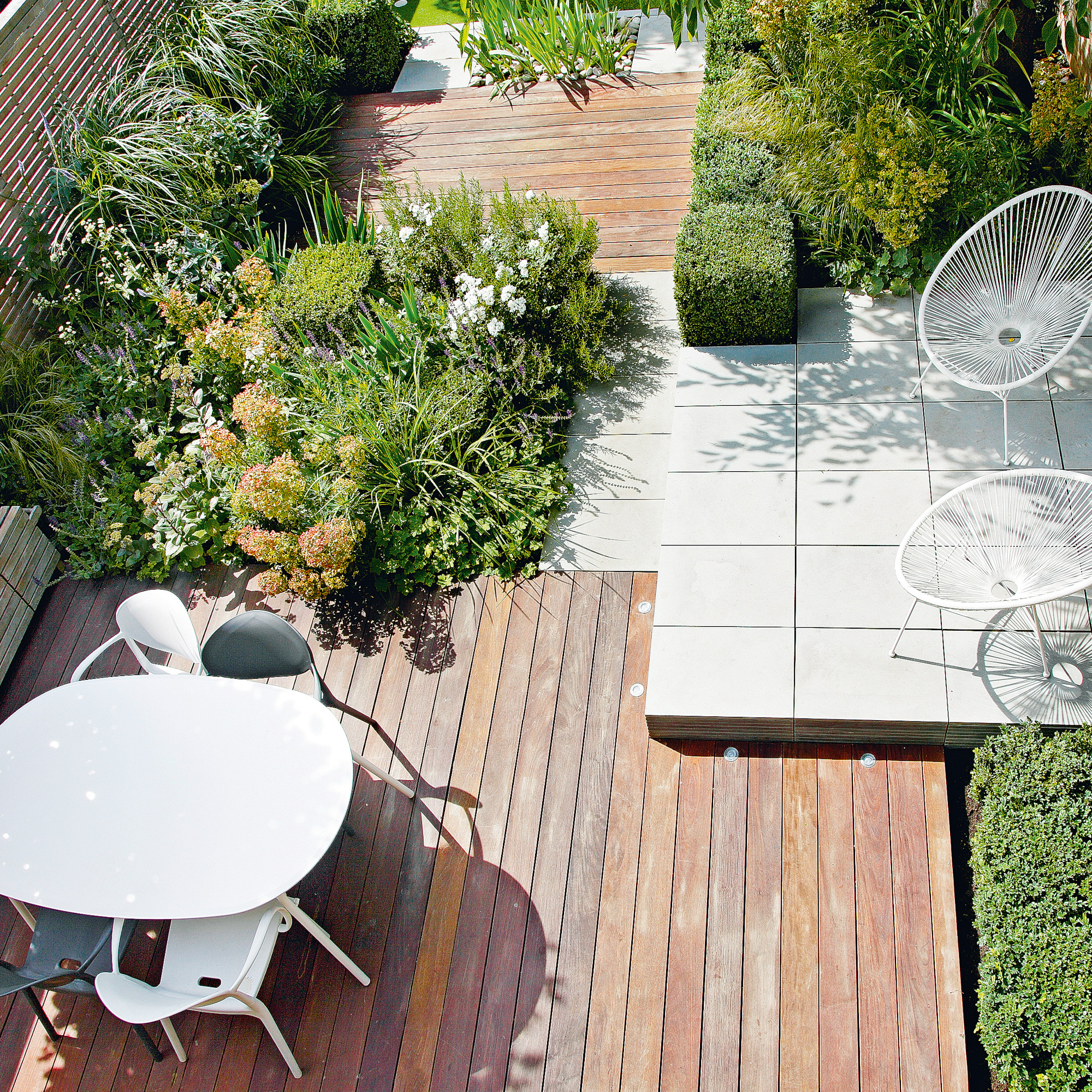
It sounds simple, but one of the biggest patio mistakes people make is to assume that once their patio is installed, the job's done and that's that. But patios do require a fair bit of upkeep to keep them looking their best.
'Regular cleaning is essential to maintain the appearance and longevity of your patio and owners often neglect their outdoor space, leaving dirt, leaves, and other debris that can build up and cause damage over time,' says Suhail Patel.
A pressure washer is a good investment, as these easily blast away grime and dirt that builds up on patio surfaces. But you can learn how to clean a concrete patio without a pressure washer too. And keep in mind that some paving materials, such as porcelain, require less maintenance than others.
7. Choosing out of proportion furniture
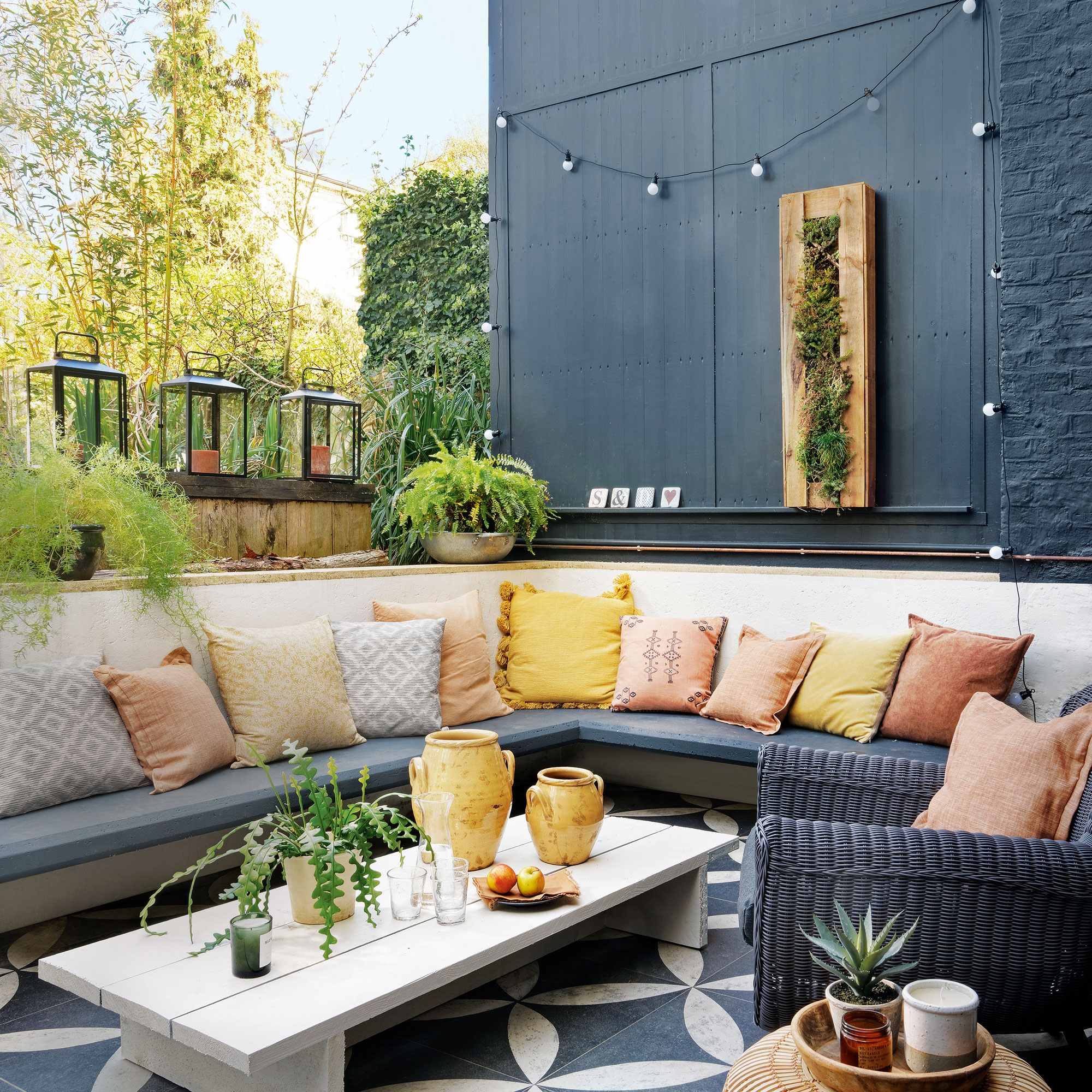
Patios are the perfect space for garden seating ideas, but often we can be a bit ambitious about what furniture we can fit on them. Make sure you have the measurements of your patio before you go shopping for a new outdoor table, and avoid the mistake of choosing furniture that's only a few inches smaller than your patio surface.
'Choose the furniture that will be on the patio first to ensure you have the right sized space for the furniture and accessories,' says Holly, Garden Street. 'Not only do you want to make sure it will fit, but you want to be sure that you’ll have enough space to walk around the furniture and enjoy the space without it feeling too cramped.'
8. Not planning your patio plants
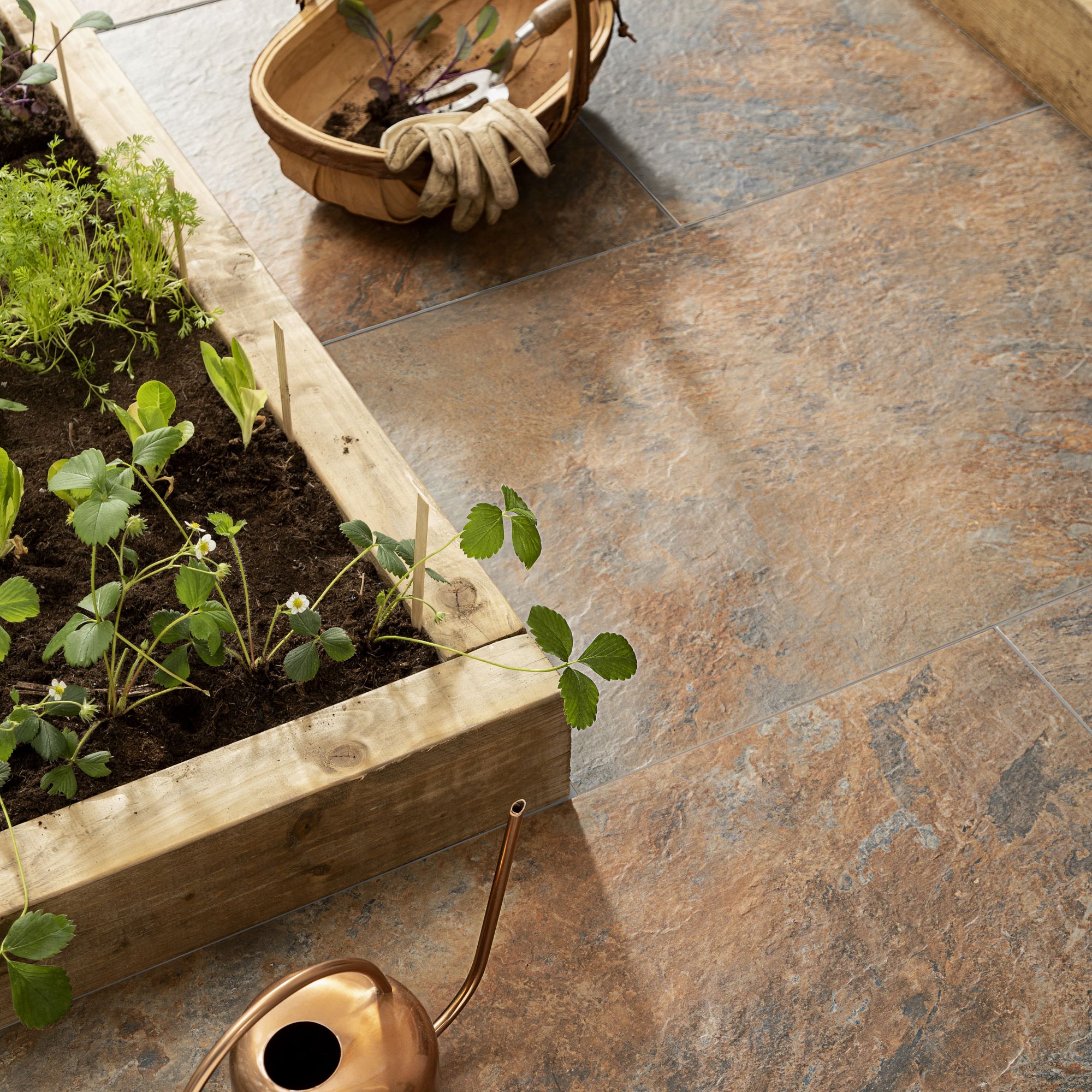
Often plants are seen as the last step in patio planning, but experts warn against making this mistake as planting ideas can have the biggest overall impact on the patio's aesthetic.
'Think about planting when designing the patio rather than waiting until it’s done,' Holly says. 'Plants, flowers and trees can make a massive difference to the patio area – they can create zones, bring colour to the space and break up any large areas of paving.'
If you're working with small patio ideas, a row of potted plants is an easy way to create mini sub-sections, such as an area for pets, or a space for the children to play that is separate from the main seating area. By planning your plants ahead of time, you'll be able to make the most of the space and avoid creating a patio that feels too cluttered.
What is the worst patio mistake?
The worst patio mistake is not incorporating some form of drainage. Overlooking this simple addition can completely ruin a patio, and worse, cause damage to the foundations of the house, if the rainwater is running towards it with no means of stopping.
'It’s really important to consider things like where the water will run off, and plan a ‘fall’ for drainage,' says Jamie Gledhill, Technical Engineering Manager, Brett Landscaping. 'You also need to spend time working out the best material for your space and how much work you are prepared to put into maintenance.'
If you don't put in adequate planning time before setting the wheels of the patio project in motion, you will experience a whole host of issues further down the line. Research what type of paving slabs can withstand frost and heavy rainfall for example, and check what they look like when wet.
'The worst patio mistakes come from not planning beforehand - getting a new patio is an exciting premise, but sometimes it can be easy to get started without properly planning which can cause a plethora of safety issues and it may not look as nice at the end,' says Amanda Telford, Marketing Manager, CTD Tiles. 'Don’t undermine how long or how much this project might cost. To achieve the finished result that you can envision, be realistic about time and money.'
What is a foolproof patio idea that will always look great?
For a patio idea that will look great year-round, opt for porcelain tiles as your surface material. The experts recommend porcelain above all over materials because aside from creating a stunningly classy finish, it will be able to withstand all elements of the British weather.
'As well as being beautiful to look at, a properly installed porcelain patio will be extremely durable and can last for many years with very little maintenance,' says Jamie from Brett Landscaping. 'Porcelain also has a very low water absorption rate meaning that it is almost waterproof. This results in enhanced frost resistance; provides longevity to the installation; means the paving is less likely to stain or retain moisture and is easier to clean and maintain.'
So if you're in the market for a low-maintenance patio, porcelain is the way to go. Plus, you can choose from shades in milky, pearly white or softer greys.
'Thanks to their large surface area and fewer grout lines, large-format porcelain paving slabs result in a continuous, uninterrupted finish - a look that is proving very popular with homeowners', says Jo Oliver-Singh, Director, The Stone & Ceramic Warehouse.
'Fewer grout lines also mean easier cleaning in general, plus the slabs can withstand the harsh chemicals often found in some cleaning products.'

Katie has been writing freelance since early 2022, specialising in all things homes and gardens, following achieving a Masters in Media and Journalism. She started out writing e-commerce content for several of Future’s interior titles, including Real Homes, Gardeningetc, Livingetc, and Homes and Gardens. Since then she’s been a regular contributor on Ideal Home’s digital team, covering news topics, how-to guides, and product reviews.
-
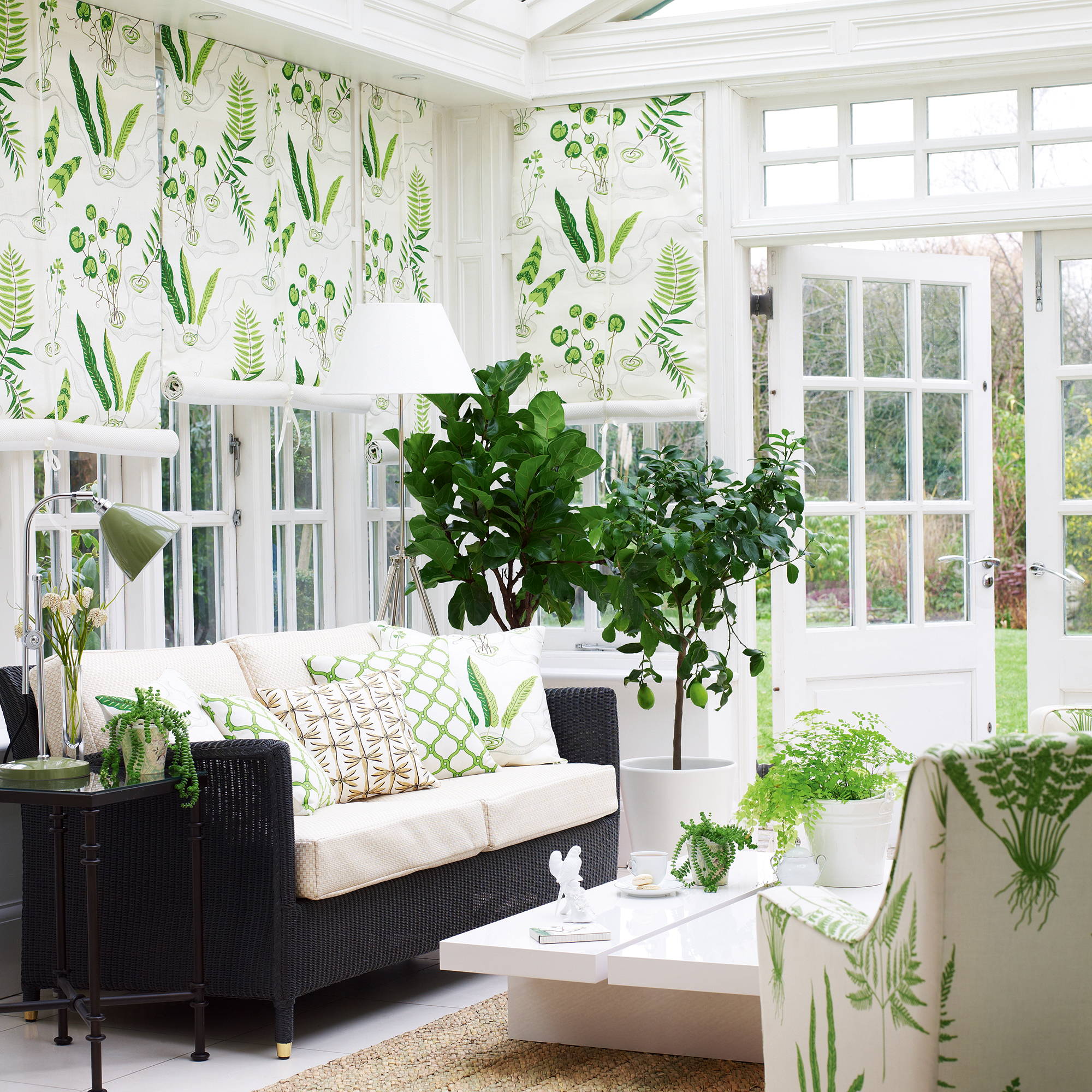 I wasted £3,000 trying to make my old conservatory usable
I wasted £3,000 trying to make my old conservatory usableThis is what I wish I'd done instead
By Sarah Handley
-
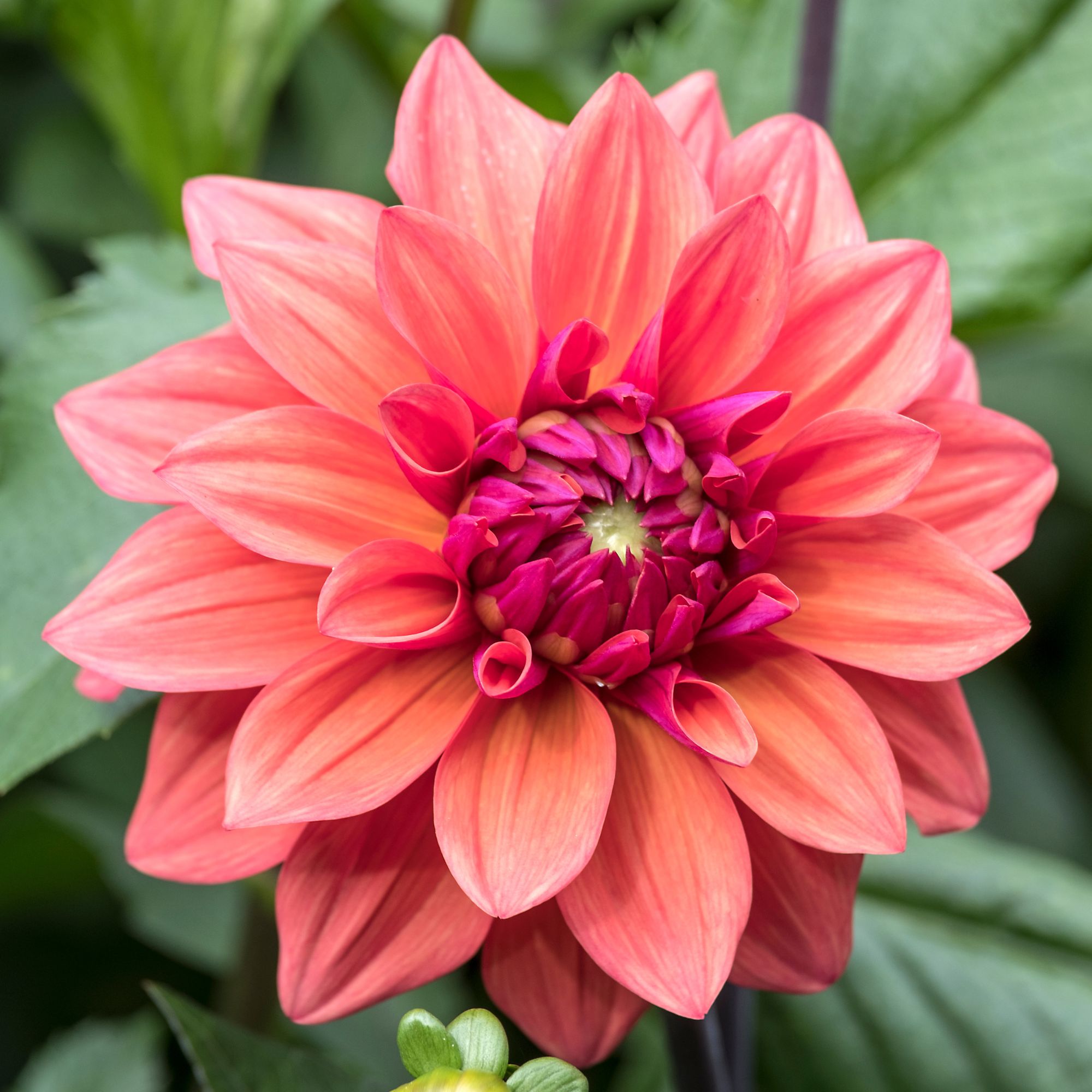 Dahlia gall could be wreaking havoc on your garden plants – here's how to spot it, and what to do if your plants are infected
Dahlia gall could be wreaking havoc on your garden plants – here's how to spot it, and what to do if your plants are infectedNip it in the bud before it affects the rest of your garden
By Sophie King
-
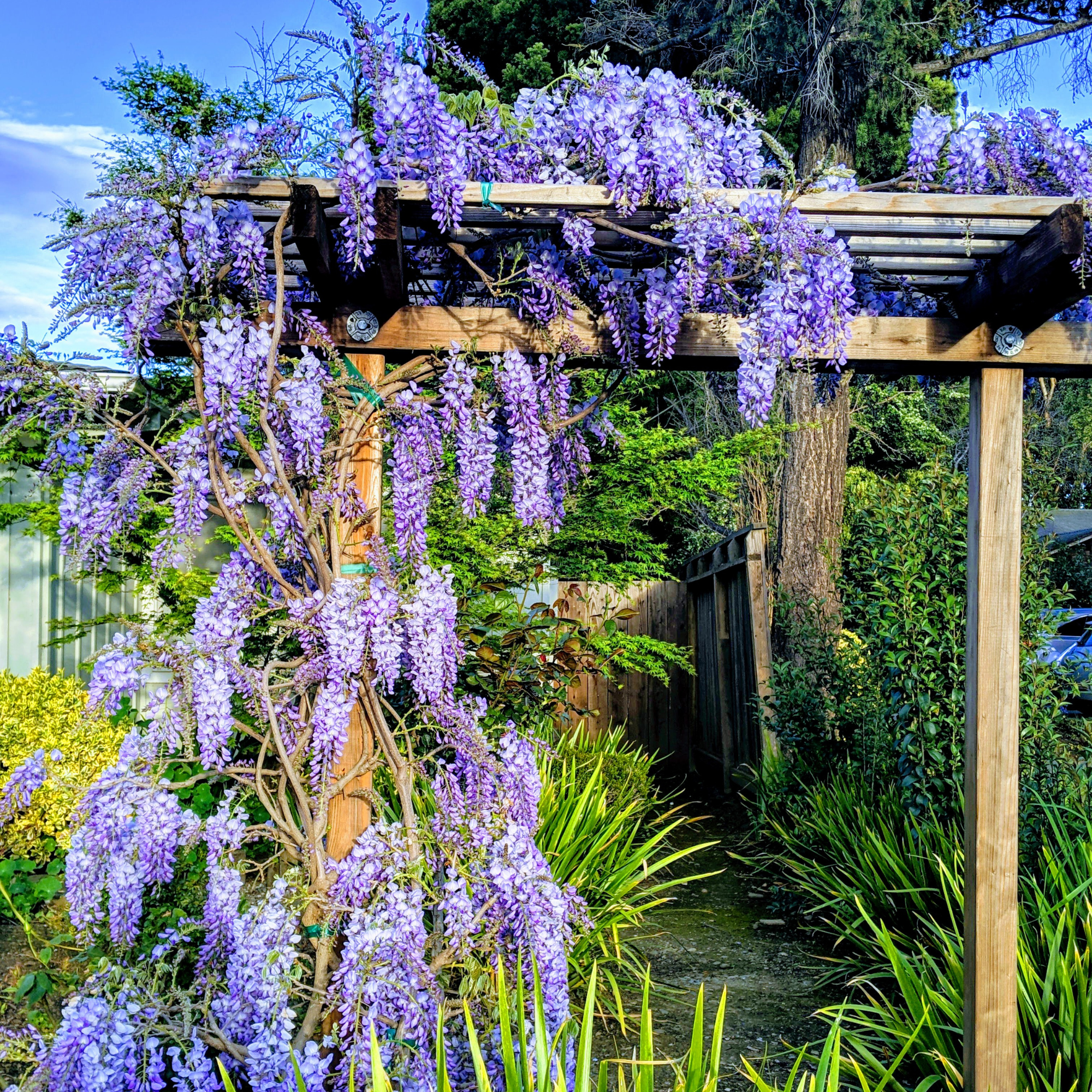 This is the best place to plant wisteria if you want beautiful romantic blooms, according to garden experts
This is the best place to plant wisteria if you want beautiful romantic blooms, according to garden expertsThis beautiful flower is on everyone's garden wishlist, and this is exactly where to plant it for best results
By Kezia Reynolds